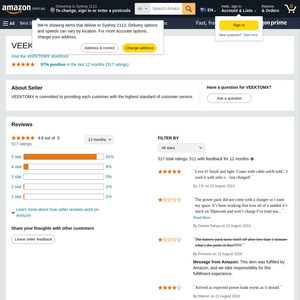Just finished work, and I thought I will find a bargain.
Be quick on this one because as usual Coupons don't last for long (unknown number of Coupons)
RRP $47.99
40% off Deal $28.99
Apply 40% Coupon
Pay $17.39 at Checkout
I think one coupon per account.




 CamelCamelCamel
CamelCamelCamel

Been buying powerbank, still have about 3 new ones. Bought this one too. Cannot resist